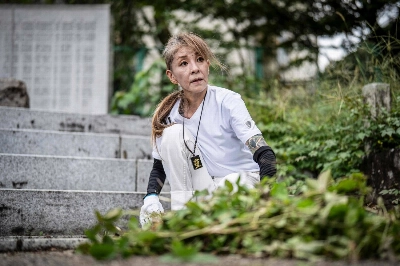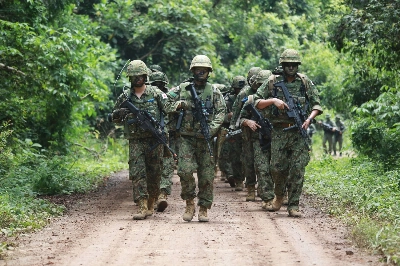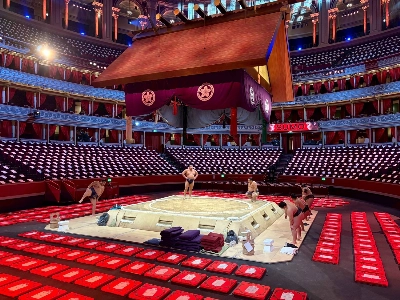OSAKA -- Soccer is a sport that relies heavily on coordination between the eye and foot.
Imagine playing it with one of those elements removed.
According to Kazuhiko Iwai, director of Nippon Lighthouse Welfare Center for the Blind, an Osaka-based social welfare corporation, the blind can actually play the game.
Iwai, himself blind, and his colleagues set up a committee earlier this month to plan "another World Cup" of soccer for the blind.
What they are planning is blind soccer games between Japan and South Korea next year. As the World Cup will be cohosted by the two countries next summer, Iwai thinks the world's biggest single sporting event will provide a great opportunity to promote his spin on the game.
Blind soccer is similar to "futsal," or the smaller five-a-side version of soccer. But in blind soccer, the four field players wear eye masks so they can't see and a cushioned headband for safety. The goalkeeper is someone with at least weak eyesight.
The ball has lead bearings inside so that it makes sounds when rolling so players can locate it.
Another player stands behind the goal to give verbal directions and claps his hands so that players can know where to shoot. Managers and coaches are allowed to instruct players from the side.
In contrast to futsal, there are no touch lines but instead cushioned walls, and thus no throw-ins during a game.
"Players wear an eye-mask because their visual impairment varies. Some can see shadows or different lights," Iwai said. He hopes blind soccer will be a sport not only for the visually impaired but also for people who can see, because the eye mask puts them on an equal footing.
According to Iwai, the current style of blind soccer started in Spain about 20 years ago and is now played in more than 30 countries. In Asia, however, not many people play it. South Korea is the exception. There, blind soccer was introduced four years ago, and now there is a national tournament involving as many as 10 teams at a facility designed for the sport.
Iwai was urged by a South Korean welfare foundation to introduce the sport to Japan. Iwai and his colleagues visited the country in September to learn about the sport.
Kojiro Hirose is one of his colleagues who was attracted by blind soccer games.
"When I first heard of the game, it sounded rather scary and dangerous. But when I actually played, the fun far exceeded the fear," said the 34-year-old researcher at the National Museum of Ethnology in Suita, Osaka Prefecture.
For Hirose, blind soccer "liberates" the blind because "we never get to run around so much when we play sports for the blind, such as 'ground softball.' "
In ground softball, the pitcher rolls a volley ball-size ball on the ground toward the batter, who knows the ball is coming by sound.
"Even when we played ground softball, it was always those with weak eyesight (rather than the completely blind) who played well. But with an eye mask put on, everybody is on the equal terms in a blind soccer game," said Hirose, who is totally blind.
He thinks blind soccer could become popular once people experience the fun of it.
But Iwai and Hirose must clear many hurdles. To form a national team, for example, they have to find a practice space. But no facility is properly equipped with cushion walls as in South Korea.
"I envy South Koreans (for their facilities)," Hirose said. "We have to begin with finding cushion walls, and even before that, money for them."


















With your current subscription plan you can comment on stories. However, before writing your first comment, please create a display name in the Profile section of your subscriber account page.